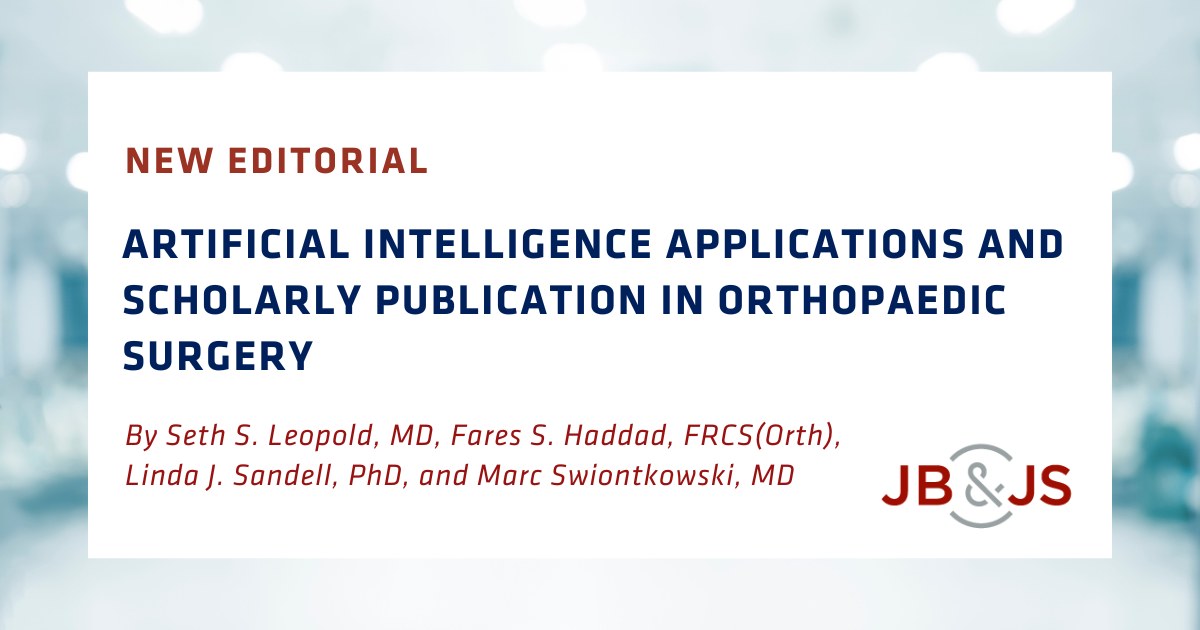A new editorial by the Editors-in-Chief of Clinical Orthopaedics and Related Research, The Bone & Joint Journal, the Journal of Orthopaedic Research, and JBJS discusses the emergence of artificial intelligence (AI) applications and their potential effects on scientific reporting. Published concurrently in the 4 journals, the editorial presents shared perspective on key points related to the creation of content using AI-driven tools.
Editorial: Artificial Intelligence Applications and Scholarly Publication in Orthopaedic Surgery
As noted in the editorial, the rapid improvement in AI capabilities may indeed offer some benefits. Among examples, “large language models such as ChatGPT might—with suitable human oversight—be able to create plain-language summaries of complex research quickly and at scale, which might make the scientific record more accessible to the public1.”
However, the editors caution that the integrity of the scholarly record can be undermined by misuse of AI-based tools. They point to authorship as one important area for consideration.
Say the editors, “Some have suggested that large language models should be considered authors; in fact, ChatGPT has been listed as a co-author in published research2 and even is a registered author in the ORCiD and SCOPUS databases. This practice is inappropriate. Under the authorship guidelines of the International Committee of Medical Journal Editors, which all of our journals follow, an author must meet a number of important standards, including being willing to be accountable for all aspects of the work, to ensure that questions related to the accuracy or integrity of the work will be suitably investigated and resolved, to be able to identify which co-authors are responsible for specific parts of the work, and to have confidence in the integrity of the contributions of their co-authors3. A large language model has no means to comply with such standards.”
Of note, the journals’ editorial boards have agreed on the following standards regarding AI applications that create text, tables, figures, images, computer code, and/or video:
(1) “AI applications cannot be listed as authors” and
(2) “Whether and how AI applications were used in the research or the reporting of its findings must be described in detail in the Methods section, and should be mentioned again in the Acknowledgments section.”
Read the full editorial: Artificial Intelligence Applications and Scholarly Publication in Orthopaedic Surgery
References
- Rosenberg A, Walker J, Griffiths S, Jenkins R. Plain language summaries: enabling increased diversity, equity, inclusion and accessibility in scholarly publishing. Learned Publishing. 2023;36(1):109-18.
- O’Connor S, ChatGPT. Open artificial intelligence platforms in nursing education: Tools for academic progress or abuse? [Erratum in: Nurse Educ Pract. 2023 Feb;67:103572]. Nurse Educ Pract. 2023 Jan;66:103537.
- International Committee of Medical Journal Editors. Defining the role of authors and contributors. Accessed 2023 Mar 3. https://bit.ly/3Yf7HmZ



